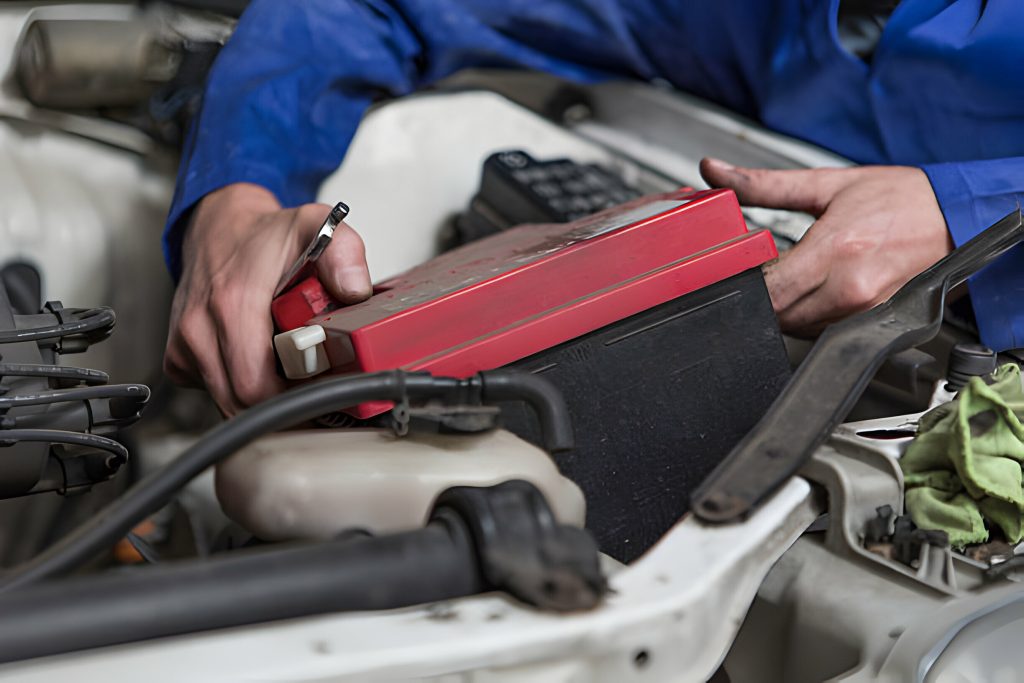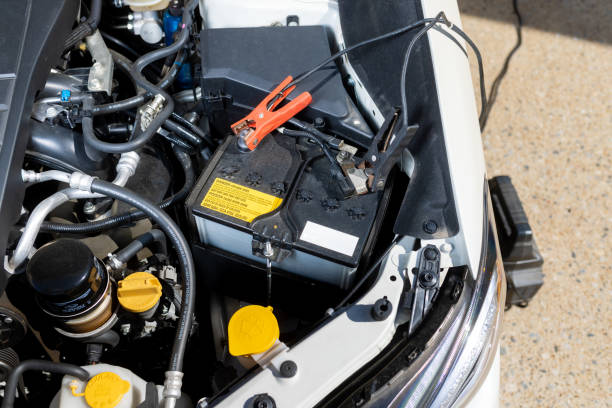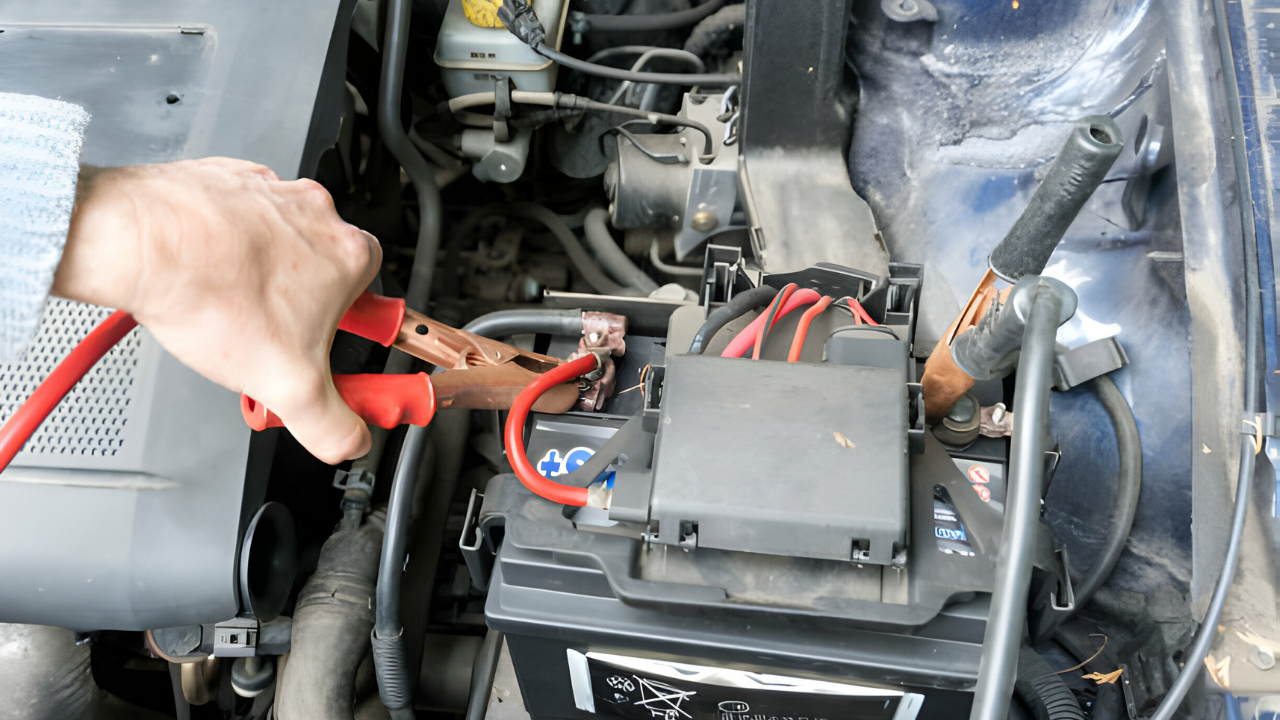A car battery needs around 100 to 200 amps to start the car. A car battery requires a specific amount of current, measured in amps, to start the vehicle.
This current activates the starter motor and cranks the engine to start combustion. The typical amp requirement for starting a car falls within 100 to 200 amps. However, this amount may vary depending on the specific make and model of the vehicle, as well as factors such as temperature and engine size.
Understanding the proper amp requirements for a car battery can help ensure your vehicle starts reliably and efficiently. We’ll explore the critical role of amps in starting a car and how to determine the appropriate level for your vehicle.
Understanding Car Battery Power
Voltage Vs. Amps
Voltage and amps are essential components of car battery power. Voltage measures the potential energy stored in the battery, while amps measure the rate of electron flow within the battery. It’s comparable to a pipe’s pressure and flow rate.
The Role Of Amps In Starting A Car
Amps play a crucial role in starting a car’s engine. When you turn the ignition key, the starter motor draws significant amps from the car battery. This high amperage is needed to power the starter motor and crank the engine, initiating the combustion process that gets the car up and running.
Determining The Amps Required To Start A Car
Determining the Amps Required to Start a Car
Factors Affecting Amps Needed
Several factors determine the number of amps a car battery needs to start the engine efficiently. These factors include the weather conditions – colder temperatures require more amps to start the car; the type of engine – diesel engines generally require more amps; the battery’s age and condition; and the engine’s size and capacity.
Calculating Amps Required
- Determine the car battery’s Cold Cranking Amps (CCA) rating, which indicates the amps the battery can deliver at 0°F for 30 seconds without dropping below 7.2 volts.
- Assess the temperature at which the car typically starts as it affects the amps required.
- Consider the age and condition of the battery, as older or worn-out batteries may require more amps to start the car.
Calculating the amps necessary to start a car is crucial for maintaining the longevity and efficiency of the battery. By understanding the factors affecting amp requirements and adequately calculating the needed amps, car owners can ensure that their vehicles start reliably, especially in challenging weather conditions.
Common Amp Ratings Of Car Batteries
Car batteries typically have standard amp ratings that range from 40 to 100 amps, with higher ratings providing more power for starting your car’s engine.
When starting your car, have a suitable amp rating in your battery. Amp ratings determine how much power your battery can deliver, ensuring a smooth and reliable start every time. This section will explore the common amp ratings of car batteries, including standard amp ratings and cold cranking amps (CCA).
Standard Amp Ratings
A car battery’s standard amp rating refers to the current amount it can provide over a specified period. This rating is typically measured in ampere-hours (Ah) or reserve capacity (RC). Understanding the standard amp rating of your battery is important as it affects your vehicle’s overall performance and longevity.
A higher standard amp rating means your battery can deliver more power, allowing for a longer lifespan and excellent reliability. On the other hand, a lower rating may result in weaker starts and a decreased ability to power auxiliary devices.
Table: Common Standard Amp Ratings
| Amp Rating | Description |
|---|---|
| 45 Ah | Typical rating for compact cars and smaller vehicles |
| 60 Ah | Common rating for mid-sized cars and sedans |
| 75 Ah | Standard rating for larger vehicles, including SUVs and trucks |
| 100 Ah | Higher ratings suitable for vehicles with increased power demands |
Remember, these amp ratings may vary depending on the specific battery make and model, so always consult your vehicle’s owner manual or a professional for the most accurate information.
Cold Cranking Amps (CCA)
Cold cranking amps (CCA) are essential in colder climates. This rating measures the battery’s ability to start your car in low temperatures. When temperatures drop, the chemical reactions within the battery slow down, reducing its overall power output.
Sufficient CCA ensures that your battery can supply enough current to start your engine, even in freezing conditions. It’s important to note that the CCA rating is typically higher than the standard amp rating, as cold weather significantly affects the battery’s performance.
Choosing a battery with a higher CCA rating is recommended for regions with freezing weather, while a lower CCA rating may suffice in warmer climates.
In conclusion, understanding the common amp ratings of car batteries, including the standard amp rating and cold cranking amps, is important for ensuring your vehicle’s reliable starting performance. Consider the standard amp rating for overall power needs and the CCA rating for cold weather conditions when selecting a battery for your car.

Effects Of Temperature On Battery Performance
The temperature significantly affects the performance of car batteries, as it influences the chemical reactions within the battery. Lower temperatures can decrease battery capacity and make it more challenging for the battery to supply the necessary amps to start the car.
On the other hand, higher temperatures can speed up the chemical reactions, which may lead to a shorter battery lifespan.
Cold Weather Considerations
In cold weather, a car battery faces numerous challenges that can significantly affect its performance. The most common issue is a decrease in the battery’s capacity to supply ample power to start the engine.
Cold temperatures slow down the chemical reactions inside the battery, which reduces its ability to produce electricity. The problem is further exacerbated by the increased thickness of the engine oil, which makes it harder for the engine to turn over.
When temperatures drop below freezing, the battery may lose up to 50% of its cranking power, making it more difficult for the car to start.
Additionally, cold weather puts extra strain on the battery, as it requires more power to overcome the increased resistance. This can lead to a higher chance of battery failure, especially if the battery is old or weak.
To combat these challenges and ensure your car starts reliably in cold weather, consider the following:
- Use a battery rated for cold-cranking amps (CCA): A CCA rating indicates a battery’s ability to deliver current at low temperatures. Opting for a higher CCA rating ensures the battery can provide adequate power even in extreme cold conditions.
- Keep the battery terminals clean: Corrosion on the terminals can impede the flow of electricity, reducing the battery’s performance. Regularly clean the terminals and apply a corrosion inhibitor to prevent this issue.
- Protect the battery from extreme cold: Insulating it with a battery blanket or placing it in a heated space, such as a garage, can help maintain a higher operating temperature, ensuring better performance.
- Consider a battery warmer: Battery warmers are designed to heat the battery when the temperature drops, allowing it to perform optimally. These devices can be handy in frigid climates.
Hot Weather Considerations
While cold weather can be harsh on car batteries, hot weather can also pose challenges and negatively impact their performance. High temperatures accelerate the chemical reactions inside the battery, causing the electrolyte to evaporate more quickly. This evaporation reduces the electrolyte level, hampering the battery’s ability to hold a charge.
The battery’s internal components can also degrade rapidly in sweltering conditions. This can result in decreased capacity and a shorter overall lifespan. Heat-related issues can even cause the battery case to expand or crack, leading to leakage of corrosive materials that can damage the surrounding components.
To ensure your car battery performs optimally in hot weather, consider the following:
- Avoid excessive heat exposure: Park your car in shaded areas or use sunshades to minimize direct exposure to the sun’s rays.
- Maintain proper electrolyte levels: Regularly check and top it up with distilled water if necessary. Be cautious not to overfill!
- Ensure good airflow: For better airflow and cooling, keep the battery and engine compartment free from debris.
- Choose a battery with good heat resistance: Opt for a battery designed for hot climates, preferably with a high-temperature rating (RC).
Tips To Ensure Adequate Amps For Starting
It’s important to consider the car battery’s requirements to ensure adequate amps for starting. Typically, a car battery needs at least 400 to 600 amps to start, depending on the vehicle’s size and engine type.
Regularly checking and maintaining the battery’s charge and connections can help ensure it has the necessary amps for a smooth start.
Introductory Paragraph:
Ensuring your car has adequate amps for starting is crucial for a smooth driving experience. When your car battery doesn’t have enough amps, it may struggle to start or fail altogether. To avoid such situations, here are some tips to ensure your car battery has the right amount of amps to start reliably.
Choosing The Right Battery:
When choosing a car battery, it’s essential to consider the recommended amps for your vehicle. Consult your car’s manual to determine the ideal amp requirements. A battery with insufficient amps may not provide enough power for the starter motor to ignite the engine, leading to starting issues.
Furthermore, choosing a battery with the correct cold cranking amps (CCA). CCA measures the battery’s ability to start the vehicle in cold weather. If you live in an area with extremely low temperatures, consider opting for a battery with a higher CCA rating to ensure reliable starting even in harsh conditions.
Regular Maintenance Practices:
Regularly maintaining your car battery is essential for optimal performance and ensuring it has adequate amps for starting. Here are some maintenance practices to follow:
- Keep the battery terminals clean and free from corrosion. Corroded terminals can hamper the flow of electricity, leading to a weakened electrical connection and reduced starting power.
- Inspect the battery case for any signs of damage or leaks. A damaged battery may not hold the total charge, resulting in insufficient amps for starting.
- Ensure the battery is securely fastened in its tray. A loose battery may experience vibrations while driving, potentially damaging the internal components and reducing its capacity to provide sufficient starting amps.
- Test your battery’s voltage regularly using a voltmeter. A healthy battery should have a 12.6 volts or higher voltage reading. If the voltage drops significantly, it may indicate a weak battery that needs replacement.
- Consider using a battery maintainer or trickle charger when your vehicle is parked for extended periods. This helps keep the battery charged and prevents it from losing amps over time.
Following these maintenance practices will ensure your car battery has adequate amps for starting and prolonging its lifespan and overall performance.

Credit: www.way.com
How many amps are in a 12-volt car battery?
The number of amps in a 12-volt car battery can vary depending on the size and capacity of the battery. However, a typical car battery usually has a rating of around 50 to 100 ampere-hours (Ah). This means it can deliver a continuous current of 50 to 100 amps for one hour. So, for a 12-volt car battery, the amps would be 50 to 100 amps.
How many volts does a battery need to start a car
A car battery typically needs around 12.6 to 12.8 volts or higher to start a car reliably. When the battery voltage drops below this range, it may struggle to provide enough power to start the engine. In many cases, a fully charged car battery will measure around 12.6 volts or slightly higher. However, the voltage may drop temporarily during cranking (starting the engine) due to the high current draw.
How many amps do you need to start a dead battery?
The number of amps needed to start a dead battery can vary depending on several factors, including the size and condition of the battery, the temperature, and the engine size.
As a rough estimate, a typical car starter motor might draw anywhere from 50 to 200 amps or more during the starting process. This current surge is necessary to overcome the engine’s internal components’ resistance and turn the engine over.
Some modern vehicles with advanced start-stop systems or hybrid technologies may require an even higher current for starting.
To jump-start a dead battery, you typically need a jump starter or another vehicle with a charged battery to provide the necessary current to crank the engine. The current supplied by the jump starter or donor vehicle should be sufficient to overcome the resistance of the dead battery and turn the engine over, allowing it to start.
Car battery amps charging.
A car battery’s charging current is measured in amps (amperes). The charging current required depends on the capacity of the battery and the charging rate being used.
Here are some general guidelines:
- Slow charging: A slow or trickle charge usually ranges from 1 to 10 amps. This method is often used for long-term maintenance charging to keep the battery topped up when the vehicle is not in use for extended periods.
- Fast charging: Fast charging rates vary but typically range from 10 to 30 amps. Fast charging is used to quickly recharge a battery that has been partially discharged, such as after starting the engine or using accessories while the engine is off.
- Jump starting: When jump starting a car, the charging current can be very high, often several hundred amps. This current surge is necessary to quickly provide the energy needed to crank the engine and start the vehicle.
It’s essential to use your battery’s appropriate charging current and follow the manufacturer’s recommendations for charging procedures. Overcharging or using a charging current that is too high can damage the battery while undercharging may not fully recharge the battery or may take an unnecessarily long time.

Frequently Asked Questions On How Many Amps Does A Car Battery Need To Start
How Many Amps Does A Car Battery Need To Start?
A car battery typically needs around 300 to 600 amps to start the engine, depending on the vehicle’s size and condition. It’s essential to have a battery with enough cranking amps to ensure a reliable start, especially in colder temperatures or if your battery is aging.
How many amps should a 12-volt car battery have?
A 12-volt car battery should ideally have a capacity of around 40-50 amp-hours (Ah) to power the vehicle’s electrical components effectively.
Is 1200 amps enough to start a car?
Yes, 1200 amps is typically more than enough to start a car. Most vehicles, typically around 200-600 amps, require far less amperage to start.
What is the minimum battery power to start a car?
The minimum battery power required to start a car is typically around 200 to 600 cold cranking amps (CCA), depending on the size and type of the vehicle’s engine.
Is 500 amps enough to start a car?
Yes, 500 amps are generally enough to start most cars, as long as the engine is in good condition and the battery is charged. However, the specific requirements can vary depending on factors such as the size and condition of the engine, the temperature, and other electrical demands on the vehicle.
What is the maximum amp to charge a 12V battery?
The maximum amperage to charge a 12V battery can vary depending on the battery’s capacity, condition, and the charging method used. However, a common rule of thumb is charging a 12V battery at around 10% of its amp-hour (Ah) rating.
For example, if you have a 100Ah battery, you aim to charge it at a maximum of around 10 amps. It’s important to refer to the manufacturer’s specifications and guidelines for your specific battery to ensure safe and optimal charging.
How many amps is a 9V battery?
A typical 9V battery delivers around 500 milliamps (0.5 amps) of current.
Conclusion
Understanding the necessary amps is crucial to ensure your car battery starts reliably. You can make informed decisions about maintaining and replacing your battery by knowing the minimum amps needed. Remember, selecting a battery with the right amperage for your vehicle is vital.
Regular checks and maintenance will help extend its lifespan and prevent unexpected breakdowns. Stay proactive and take care of your car battery to enjoy seamless starts every time.

I am a technology Specialized writer and blogger based in the USA & UK. I have four years of experience in Technology, Social Media and all types of Battery’s like Solar Battery,Car Battery,Lithium Battery etc. So I work on solving these issues and give various tips on these issues.
